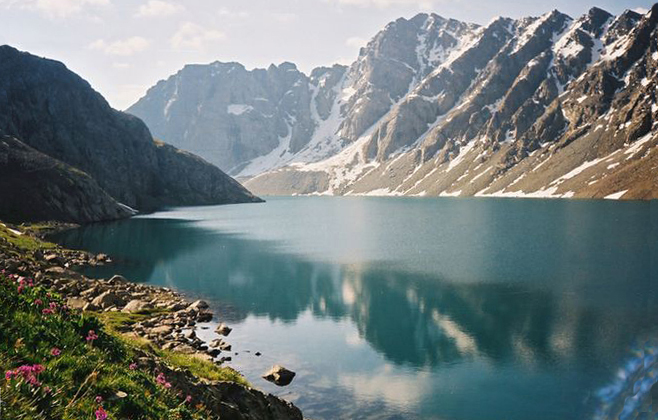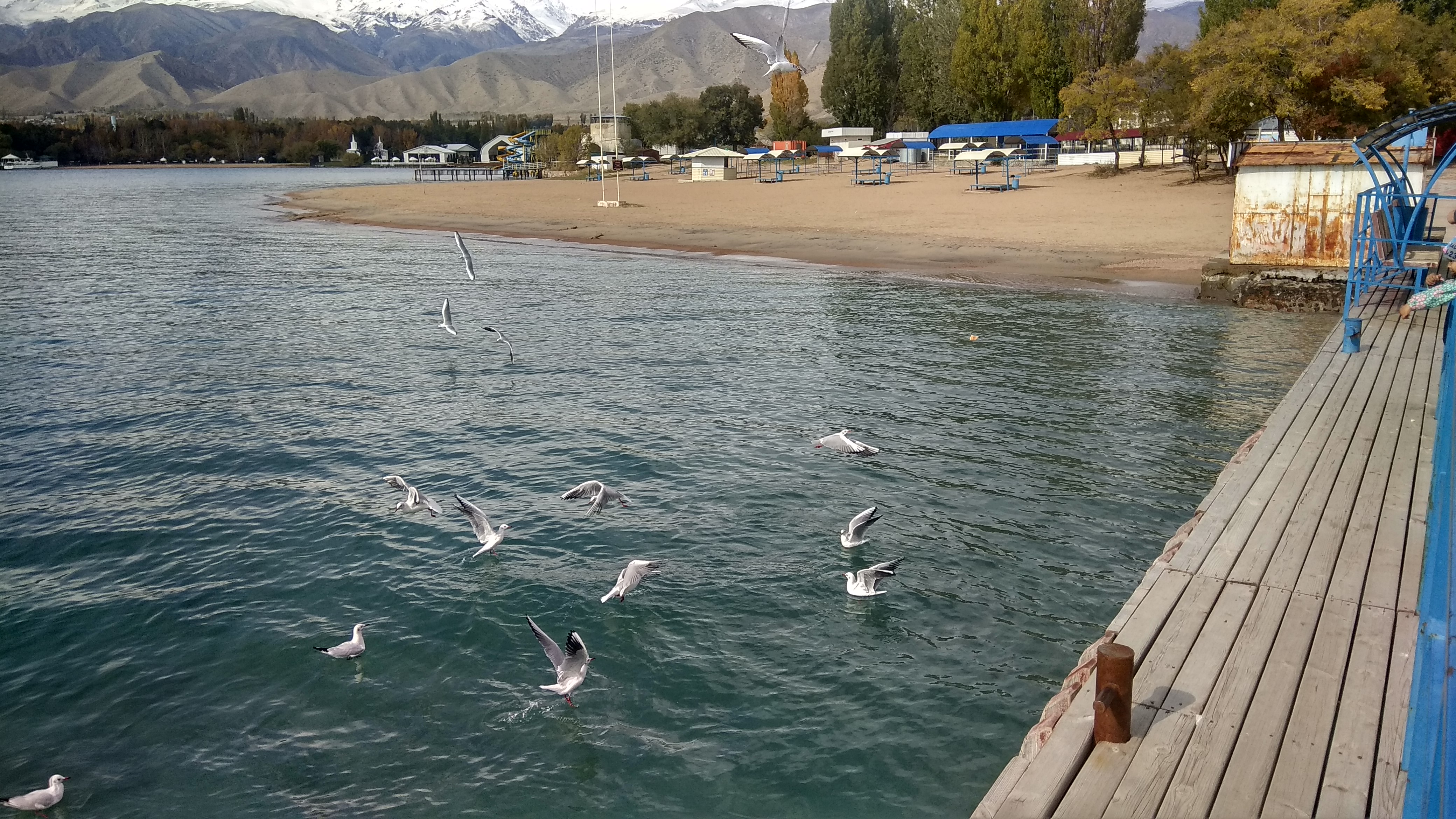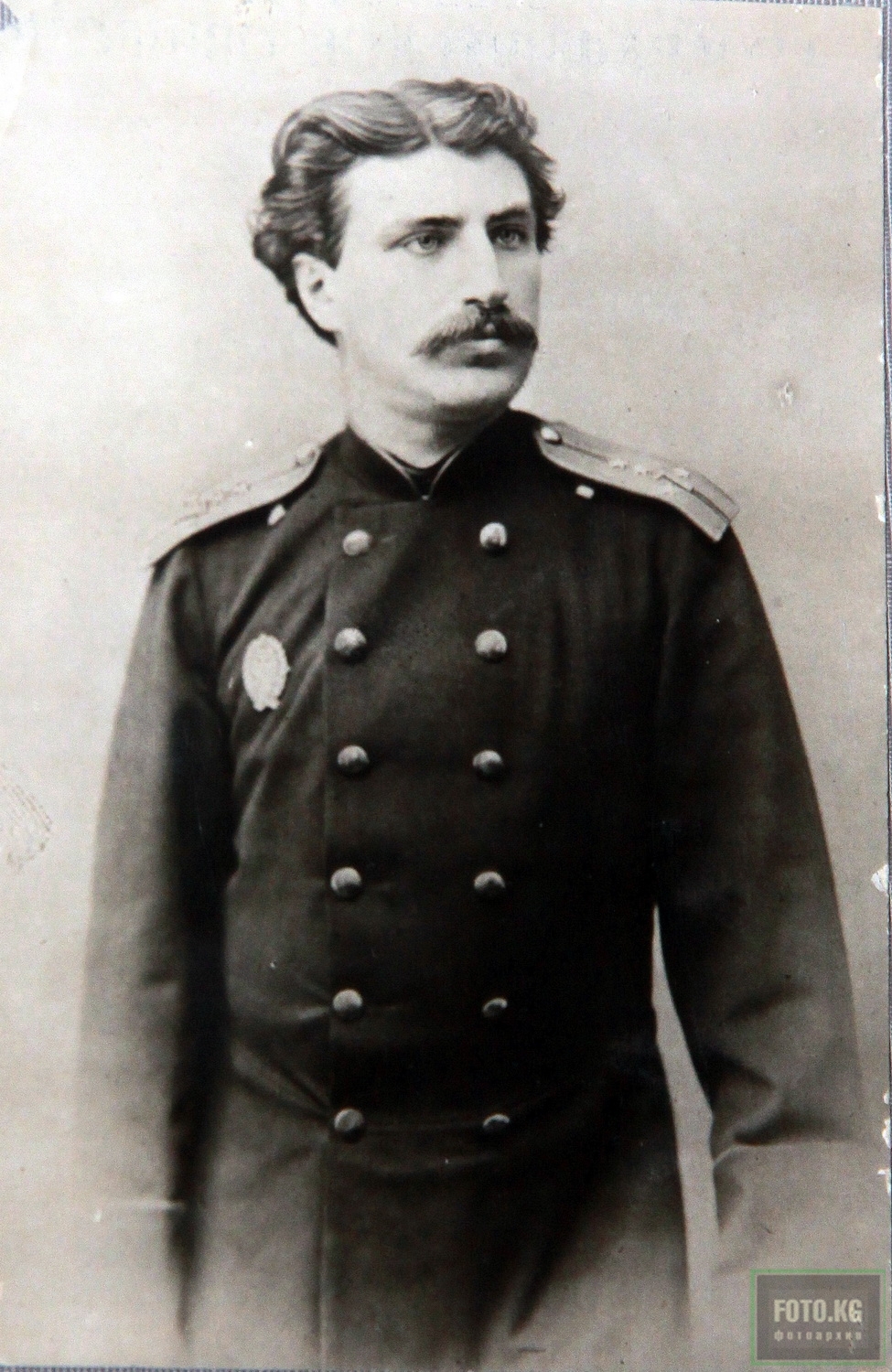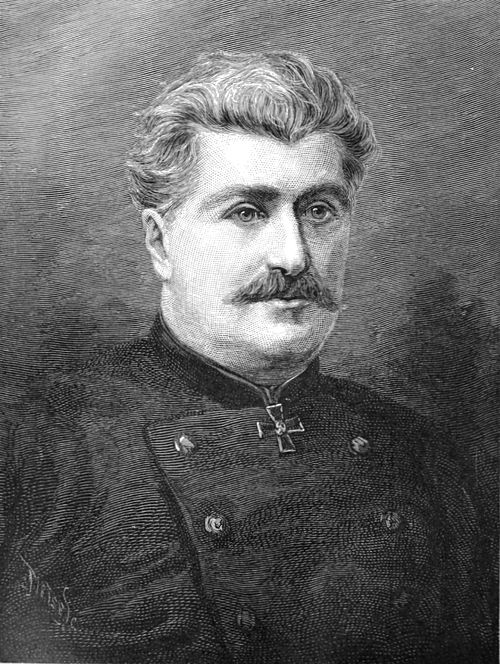|
Karakol
Karakol ( ky, Каракол, Karakol, قاراقول, ; zh, 卡拉科尔), formerly Przhevalsk (russian: Пржевальск), is the fourth-largest city in Kyrgyzstan, near the eastern tip of Lake Issyk-Kul, about from the Kyrgyzstan–China border and from the capital Bishkek. It is the administrative capital of Issyk-Kul Region. Its area is , and its resident population was 84,351 in 2021 (both including Pristan'-Przheval'sk). To the north, on highway A363, is Tüp, and to the southwest Jeti-Ögüz resort. History A Russian military outpost founded on 1 July 1869, Karakol grew in the 19th century after explorers came to map the peaks and valleys separating Kyrgyzstan from China. In the 1880s Karakol's population surged with an influx of Dungans, Chinese Muslims fleeing warfare in China. In 1888, the Russian explorer Nicholay Przhevalsky died in Karakol of typhoid, while preparing for an expedition to Tibet; the city was renamed Przhevalsk in his honor. After loca ... [...More Info...] [...Related Items...] OR: [Wikipedia] [Google] [Baidu] |
Karakol Gorge
Karakol ( ky, Каракол, Karakol, قاراقول, ; zh, 卡拉科尔), formerly Przhevalsk (russian: Пржевальск), is the fourth-largest city in Kyrgyzstan, near the eastern tip of Lake Issyk-Kul, about from the Kyrgyzstan–China border and from the capital Bishkek. It is the administrative capital of Issyk-Kul Region. Its area is , and its resident population was 84,351 in 2021 (both including Pristan'-Przheval'sk). To the north, on highway A363, is Tüp, and to the southwest Jeti-Ögüz resort. History A Russian military outpost founded on 1 July 1869, Karakol grew in the 19th century after explorers came to map the peaks and valleys separating Kyrgyzstan from China. In the 1880s Karakol's population surged with an influx of Dungans, Chinese Muslims fleeing warfare in China. In 1888, the Russian explorer Nicholay Przhevalsky died in Karakol of typhoid, while preparing for an expedition to Tibet; the city was renamed Przhevalsk in his honor. After local ... [...More Info...] [...Related Items...] OR: [Wikipedia] [Google] [Baidu] |
Dungan People
Dungan, Xiao'erjing: ; zh, s=东干族, t=東干族, p=Dōnggān zú, w=Tung1kan1-tsu2, , Xiao'erjing: ; russian: Дунгане, ''Dungane''; ky, Дуңгандар, ''Duñgandar'', دۇنغاندار; kk, Дүңгендер, ''Düñgender'', دٷڭگەندەر is a term used in territories of the former Soviet Union to refer to a group of Muslim people of Hui origin. Turkic-speaking peoples in Xinjiang Province in Northwestern China also sometimes refer to Hui Muslims as Dungans. In both China and the former Soviet republics where they reside, however, members of this ethnic group call themselves Hui because Dungans are descendants of historical Hui groups that migrated to Central Asia. In the censuses of the countries of the former Soviet Union, the Dungans (enumerated separately from Chinese) are found in Kazakhstan (36,900 according to the 1999 census), Kyrgyzstan (58,409 according to the 2009 census) and Russia (801 according to the 2002 census). [...More Info...] [...Related Items...] OR: [Wikipedia] [Google] [Baidu] |
Issyk-Kul Region
Issyk-Kul Region ( ky, Ысык-Көл облусу, Ysyk-Köl oblusu; russian: Иссык-Кульская область, Issyk-Kulskaya oblast) is one of the regions of Kyrgyzstan. Its capital is Karakol. It is surrounded by Almaty Region, Kazakhstan (north), Chüy Region (west), Naryn Region (southwest) and Xinjiang, China (southeast). It takes its name from Lake Issyk-Kul ("warm lake"), the world's second-largest high altitude lake. Its total area is . The resident population of the region was 501,933 as of January 2021. The region has a sizeable Russian (8.0% in 2009) minority. Geography The north is dominated by the eye-shaped Issyk-Kul lake, surrounded by the ridges of the Tian Shan mountain system: the Kyungey Ala-Too mountains to the north and the Terskey Alatau to the south (the 'sunny' and 'shady' Alatau, respectively). To the south are mountains and 'jailoos' (mountain meadows used for summer grazing). The highest peaks of the Tian Shan mountains, including Khan Te ... [...More Info...] [...Related Items...] OR: [Wikipedia] [Google] [Baidu] |
Kyrgyzstan
Kyrgyzstan,, pronounced or the Kyrgyz Republic, is a landlocked country in Central Asia. Kyrgyzstan is bordered by Kazakhstan to the north, Uzbekistan to the west, Tajikistan to the south, and the People's Republic of China to the east. Its capital and largest city is Bishkek. Ethnic Kyrgyz make up the majority of the country's seven million people, followed by significant minorities of Uzbeks and Russians. The Kyrgyz language is closely related to other Turkic languages. Kyrgyzstan's history spans a variety of cultures and empires. Although geographically isolated by its highly mountainous terrain, Kyrgyzstan has been at the crossroads of several great civilizations as part of the Silk Road along with other commercial routes. Inhabited by a succession of tribes and clans, Kyrgyzstan has periodically fallen under larger domination. Turkic nomads, who trace their ancestry to many Turkic states. It was first established as the Yenisei Kyrgyz Khaganate later in ... [...More Info...] [...Related Items...] OR: [Wikipedia] [Google] [Baidu] |
Issyk-Kul
Issyk-Kul (also Ysyk-Köl, ky, Ысык-Көл, lit=warm lake, translit=Ysyk-Köl, , zh, 伊塞克湖) is an endorheic lake (i.e., without outflow) in the Northern Tian Shan mountains in Eastern Kyrgyzstan. It is the seventh-deepest lake in the world, the tenth-largest lake in the world by volume (though not in surface area) and the second-largest saline lake after the Caspian Sea. Issyk-Kul means "warm lake" in the Kyrgyz language; although it is located at a lofty elevation of and subject to severe cold during winter, it never freezes. The lake is a Ramsar site of globally significant biodiversity and forms part of the Issyk-Kul Biosphere Reserve. Geography Issyk-Kul Lake is long, up to wide and its area is . It is the second-largest mountain lake in the world behind Lake Titicaca in South America. It is at an altitude of and reaches in depth. About 118 rivers and streams flow into the lake; the largest are the Jyrgalang and Tüp. It is fed by springs, includi ... [...More Info...] [...Related Items...] OR: [Wikipedia] [Google] [Baidu] |
Pristan'-Przheval'sk
Pristan'-Przheval'sk is an urban-type settlement in the Issyk-Kul Region of Kyrgyzstan. Administratively, it is part of the city Karakol. The town was named after the Russian geographer, Nikolai Mikhailovich Przhevalsky, who is buried nearby. It lies 12 km north west of Karakol. Its population was 2,829 in 2021. Kyrgyz and Dungan rebels attacked Przheval'sk during the 1916 Basmachi revolt The Basmachi movement (russian: Басмачество, ''Basmachestvo'', derived from Uzbek: "Basmachi" meaning "bandits") was an uprising against Russian Imperial and Soviet rule by the Muslim peoples of Central Asia. The movement's roots .... This was met by repression and in Przheval'sk 70% of the Kyrgyz died along with 90% of their cattle. [...More Info...] [...Related Items...] OR: [Wikipedia] [Google] [Baidu] |
Przhevalsky Museum
Nikolay Mikhaylovich Przhevalsky (or Prjevalsky;; pl, Nikołaj Przewalski, . – ) was a Russian geographer of Polish descent (he was born in a Polish noble family), and a renowned explorer of Central and East Asia. Although he never reached his ultimate goal, the holy city of Lhasa in Tibet, he traveled through regions then unknown to the West, such as northern Tibet (modern Tibet Autonomous Region), Amdo (now Qinghai) and Dzungaria (now northern Xinjiang). He contributed substantially to European knowledge of Central Asian geography. He also described several species previously unknown to European science: Przewalski's horse, Przewalski's gazelle, and the wild Bactrian camel, all of which are now endangered. He was a mentor of his follower Pyotr Kozlov. Biography Przhevalsky was born in Kimborovo, in the Smolensky Uyezd of the Smolensk Governorate of the Russian Empire in the Polish noble family. He studied there and at the military academy in St. Petersburg. In ... [...More Info...] [...Related Items...] OR: [Wikipedia] [Google] [Baidu] |
Nikolay Przhevalsky
Nikolay Mikhaylovich Przhevalsky (or Prjevalsky;; pl, Nikołaj Przewalski, . – ) was a Russian geographer of Polish descent (he was born in a Polish noble family), and a renowned explorer of Central and East Asia. Although he never reached his ultimate goal, the holy city of Lhasa in Tibet, he traveled through regions then unknown to the West, such as northern Tibet (modern Tibet Autonomous Region), Amdo (now Qinghai) and Dzungaria (now northern Xinjiang). He contributed substantially to European knowledge of Central Asian geography. He also described several species previously unknown to European science: Przewalski's horse, Przewalski's gazelle, and the wild Bactrian camel, all of which are now endangered. He was a mentor of his follower Pyotr Kozlov. Biography Przhevalsky was born in Kimborovo, in the Smolensky Uyezd of the Smolensk Governorate of the Russian Empire in the Polish noble family. He studied there and at the military academy in St. Petersbu ... [...More Info...] [...Related Items...] OR: [Wikipedia] [Google] [Baidu] |
Nicholas Michailovitch Prjevalsky
Nikolay Mikhaylovich Przhevalsky (or Prjevalsky;; pl, Nikołaj Przewalski, . – ) was a Russian geographer of Polish descent (he was born in a Polish noble family), and a renowned explorer of Central and East Asia. Although he never reached his ultimate goal, the holy city of Lhasa in Tibet, he traveled through regions then unknown to the West, such as northern Tibet (modern Tibet Autonomous Region), Amdo (now Qinghai) and Dzungaria (now northern Xinjiang). He contributed substantially to European knowledge of Central Asian geography. He also described several species previously unknown to European science: Przewalski's horse, Przewalski's gazelle, and the wild Bactrian camel, all of which are now endangered. He was a mentor of his follower Pyotr Kozlov. Biography Przhevalsky was born in Kimborovo, in the Smolensky Uyezd of the Smolensk Governorate of the Russian Empire in the Polish noble family. He studied there and at the military academy in St. Petersburg. In ... [...More Info...] [...Related Items...] OR: [Wikipedia] [Google] [Baidu] |
Tian Shan
The Tian Shan,, , otk, 𐰴𐰣 𐱅𐰭𐰼𐰃, , tr, Tanrı Dağı, mn, Тэнгэр уул, , ug, تەڭرىتاغ, , , kk, Тәңіртауы / Алатау, , , ky, Теңир-Тоо / Ала-Тоо, , , uz, Tyan-Shan / Tangritog‘, , also known as the Tengri Tagh or Tengir-Too, meaning the ''Mountains of Heaven'' or the ''Heavenly Mountain'', is a large system of mountain ranges located in Central Asia. The highest peak in the Tian Shan is Jengish Chokusu, at high. Its lowest point is the Turpan Depression, which is below sea level. One of the earliest historical references to these mountains may be related to the Xiongnu word ''Qilian'' ( zh, s=祁连, t=祁連, first=t, p=Qílián) – according to Tang commentator Yan Shigu, ''Qilian'' is the Xiongnu word for sky or heaven. Sima Qian in the ''Records of the Grand Historian'' mentioned ''Qilian'' in relation to the homeland of the Yuezhi and the term is believed to refer to the Tian Shan rather than the ... [...More Info...] [...Related Items...] OR: [Wikipedia] [Google] [Baidu] |
Altyn Arashan
Altyn Arashan (Golden Spa) is a valley and mountain resort near Karakol and Issyk Kul Lake, northeastern Kyrgyzstan. It lies along the trekking route from Teploklyuchenka Teploklyuchenka (russian: Теплоключенка, ky, Теплоключенка, also Ак-Суу - ''Ak-Suu'') is a large village in the Issyk-Kul Region of Kyrgyzstan with population of 14,009 in 2021. It is the administrative center of th ... (Ak-Suu). It is a hot spring development set in an alpine valley, containing the 5020 metre Pik Palatka in its southern part. It is said to "include three groups of nitric thermals springs on the right side of the Arashan River, 20 km southeast of Karakol mountain, situated in a picturesque forest landscape at an altitude of 2350-2435 metres." The resort has numerous wooden sheds which contain hot sulfurous pools to cure various ailments. The resort is set in a botanical research area called the Arashan State Nature Reserve which has about 20 snow leopards and se ... [...More Info...] [...Related Items...] OR: [Wikipedia] [Google] [Baidu] |
Jeti-Ögüz Resort
Jeti-Ögüz ( ky, Жети-Өгүз, Jeti-Ögüz, lit=seven bulls) is a balneotherapic resort located at the Jeti-Ögüz Rocks near Issyk Kul in the Jeti-Ögüz District of Issyk-Kul Region of Kyrgyzstan, about 28 km west of Karakol, and near Jeti-Ögüz village. Its population was 337 in 2021. History The thermal springs of Jeti-Ögüz were known to local inhabitants since antiquity. The place became known to Europe after 1856 when Semenov-Tian-Shanskii first visited it. Since 1965 the resort operates year-round. In 1991, an important meeting between Boris Yeltsin and Askar Akayev Askar Akayevich Akayev ( ky, Аскар Акаевич (Акай уулу) Акаев, translit=Askar Akayevich (Akay Uulu) Akayev ; ; born 10 November 1944) is a Kyrgyz politician who served as President of Kyrgyzstan from 1990 until being ove ... took place in Jeti-Ögüz. Places of interest This resort is a common destination of interest for citizens of Kyrgyzstan, as well as a pop ... [...More Info...] [...Related Items...] OR: [Wikipedia] [Google] [Baidu] |





.jpg)

